Selling pool supplies online makes sense, especially when you consider that in 2020, people spent an average of 145 minutes per day on social media. People looking for just about anything are turning to the internet as their first step in finding what they want—including pool and spa supplies. They may be looking for help for a problem or to find the supplies they need to keep their system running at its best. As a supplier, it's important to create connections online — they can be valuable leads for sales.
If someone walked into your brick-and-mortar store, you would have no problem answering questions and guiding them to the products you offer that solve their problems. The question is, how do you do that online? Here are some tips for connecting with your most likely buyers online:
#1: Establish Your Value
Before you can begin to reach and sell to customers, you need to establish the "why" in your business. Why should they buy from you over other sellers? What makes you unique?
It's essential to define this now. That way, you know what to present to people on social media and online, which helps you close the sale. Without a killer “why,” your business is no different from competitors in the eyes of a prospective buyer.
For example, perhaps your pool products are eco-friendly. That's a standout feature and a reason why people should take a closer look at your products. Determine how your product stands out. That way, you can communicate it clearly when reaching your audience.
#2: Build Up from SEO
Search engine optimization (SEO) is valuable for all small business owners. It allows you to build a presence online. It's essential to invest in SEO — the use of keywords and quality content on your website — now before you dive into other methods of building your digital reach. Having a website and blog that's ranking well will help you become a recognized leader in the field. It also gives you a place to direct people ready to buy or get more information.
#3: Utilize Social Media
Social media is a vast pool of potential buyers — but these buyers don’t want you to make a hard sell. Instead, you need to draw people into your social media accounts and then convince them to buy from you without using overly sales-like language. Social media is a unique type of digital marketing that, when used wisely, can help your business to grow.
For example, social media can showcase your business's brand. It also creates opportunities to build long-term relationships with your customers. Social media is valuable if you want your customers to come back to you year after year for pool and spa supplies.
Oberlo provides some impressive statistics in this area. Did you know that 48% of the population is using social media? If your target customer is between 30 and 49 years of age, social media is essential – 81% of people in this age group are using social media. Even older adults have adopted social media: about 73% of people between 50 and 64 use it.
#4: Use Technology To Support Your Online Growth
Providing the services customers need when and how they need them is crucial. For example, it helps to have a live chat feature on your website to help people meet their needs right away. If they need a specific product, they can get help finding it. You may want to use chatbots that allow your customers to access that type of on-demand information, even if they are searching for pool filters at 2 AM.
#5: Build Ongoing Connections
Social media, digital marketing efforts, targeted ads, and other activities you do online to get leads are even better when you have an email list in place. That is, once you start to grow your online presence, you want to be able to reconnect with customers over time. Email marketing is a vital component of online sales — and these customers will need your products again. Consider a customer incentive program. Make sure to frequently post your deals, special offers, and new products.
Building up your online pool and spa product sales means putting time and effort into developing a robust digital marketing plan. It may include multiple factors such as SEO, paid ads, organic ranking, and engagement opportunities with customers. Your customers are online. You need to be there, too.



